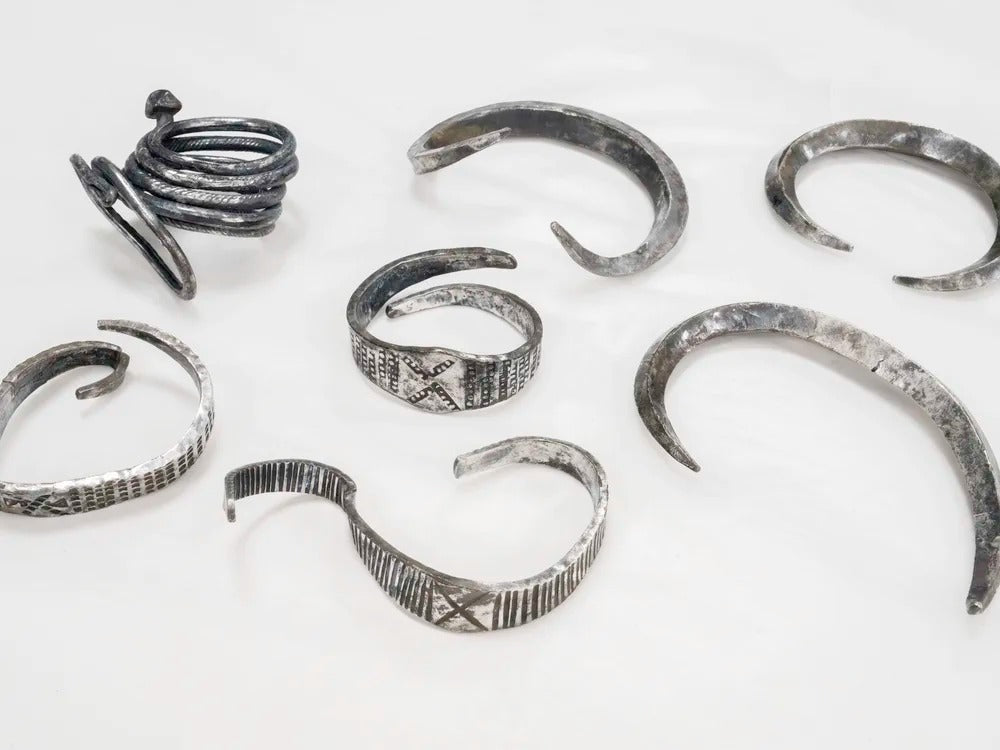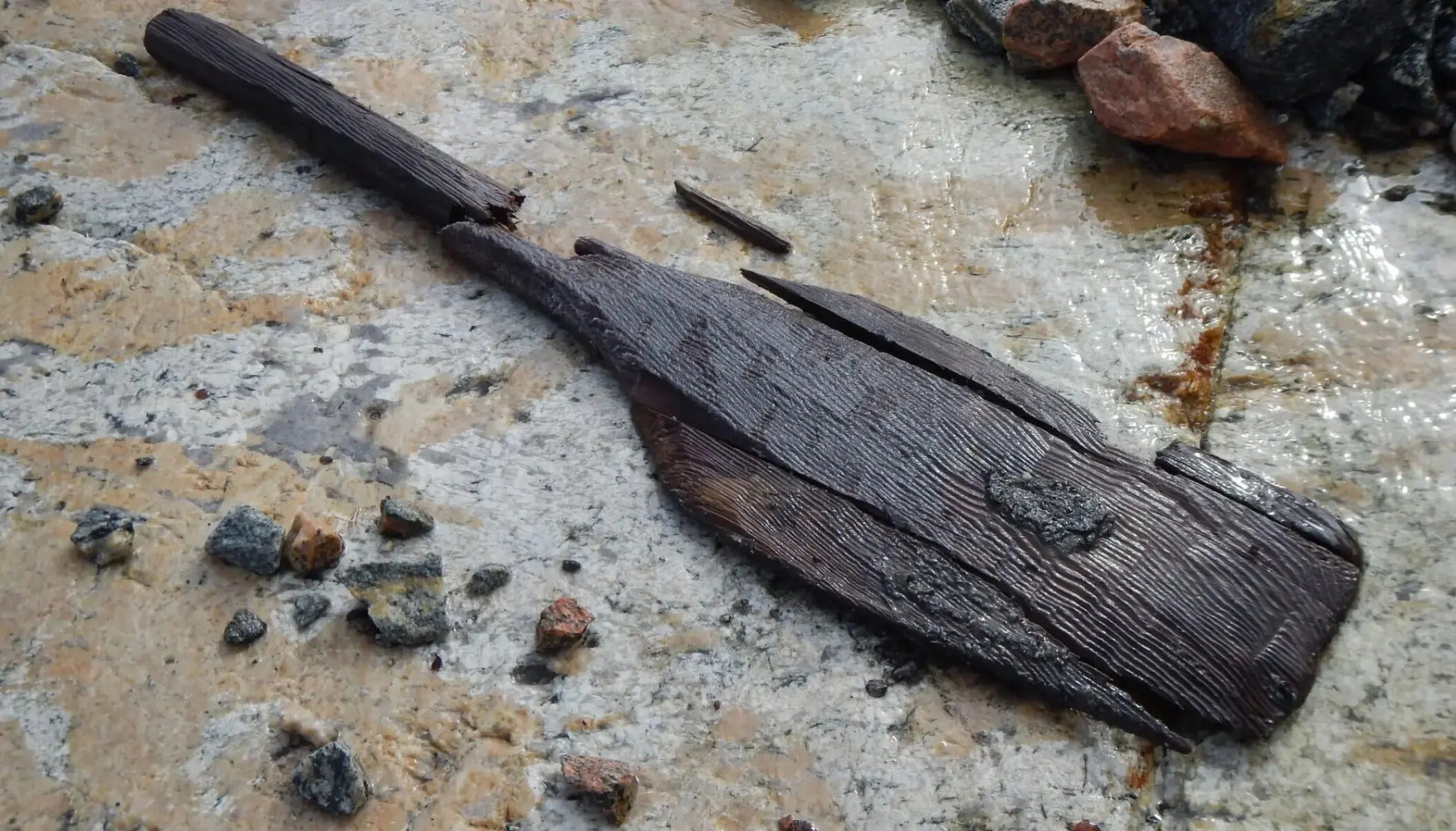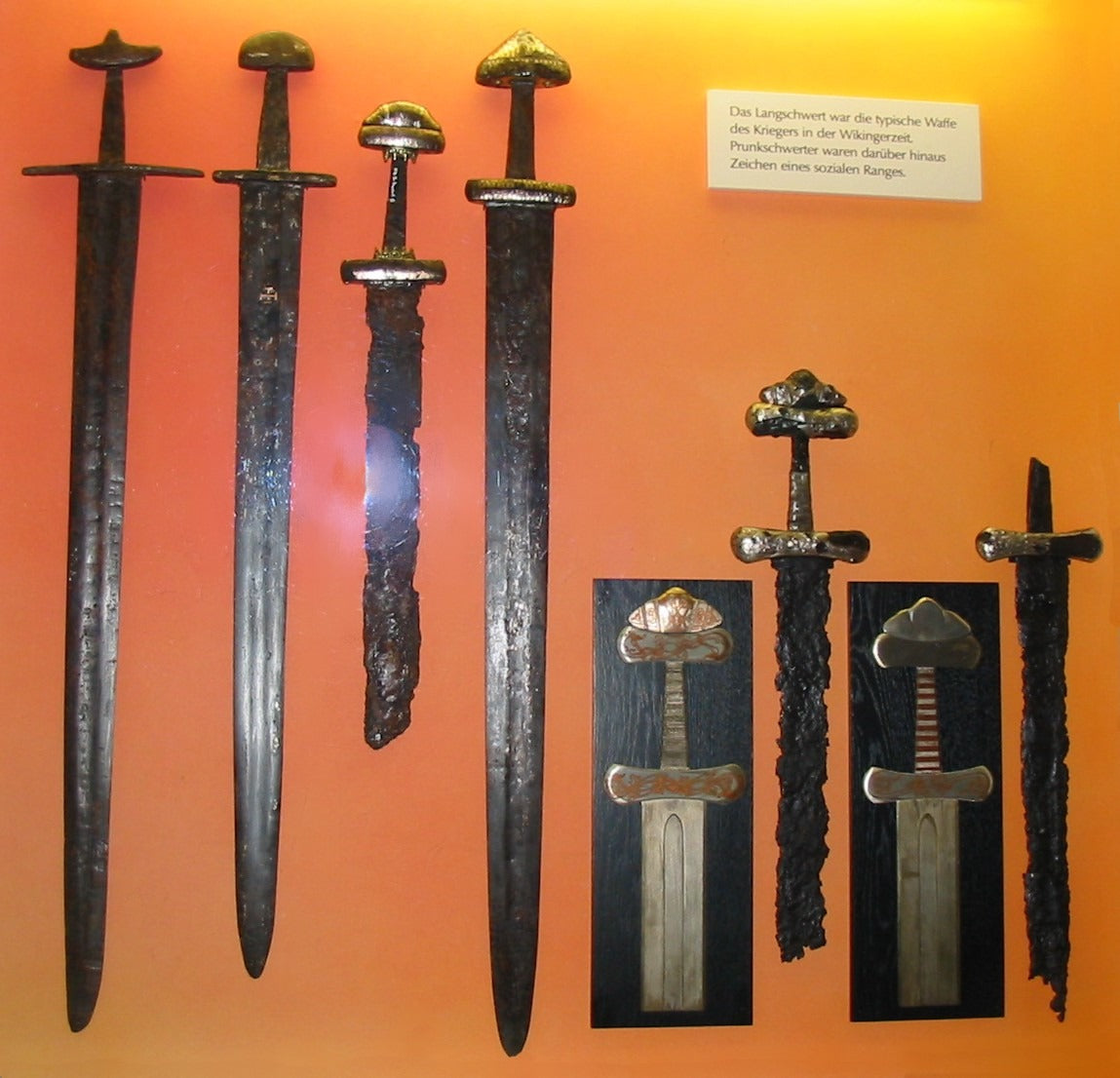
Discovery of Silver Viking Age Armbands Sheds Light on Denmark’s Historical Significance
In an intriguing archaeological discovery, Gustav Bruunsgaard, a 22-year-old archaeology student from Aarhus University, uncovered a significant trove of silver Viking Age armbands while metal detecting in Denmark. This finding not only adds to our understanding of Viking trade and craftsmanship but also underscores the pivotal role of Aarhus in the Viking world. The seven silver armbands, dating to around 800 C.E., offer a glimpse into the economic and cultural exchanges of the Viking Age and are now on display at the Moesgaard Museum.
The Discovery: Unearthing Viking Treasure

Photo: Poul Madsen / Moesgaard Museum
Unveiling the Armbands
In the spring of 2024, Bruunsgaard’s metal detector led him to a field in Elsted, Denmark, just north of Aarhus. Initially, he discovered a single silver bangle. Upon returning to the site, he unearthed six more, collectively weighing over a pound. The Moesgaard Museum, which is showcasing the armbands, has dated these artifacts to approximately 800 C.E., aligning them with the early Viking Age.
The silver armbands are notable not only for their quantity but also for their craftsmanship. They were found in an area known for Viking-era settlements, providing valuable context for the discovery. Aarhus, historically referred to as “Aros,” is the second-largest city in Denmark and was a prominent settlement by the 10th century C.E.
Craftsmanship and Origins
The armbands exhibit a range of designs and features, reflecting the broad cultural influences of the time. One of the bands is shaped into a tight coil, a style believed to have originated in Russia or Ukraine before spreading to Scandinavia. Three of the bands are adorned with decorative stamps that would later become prevalent in Ireland, while the remaining three are smooth, lacking ornamentation and found across Scandinavia and England.
This variety in design highlights the Viking Age’s extensive trade networks and cultural interactions. The use of silver as a medium of exchange during this period was common, with armbands being standardized in weight to facilitate transactions.
Implications of the Find
Connecting Historical Dots
The discovery of these armbands reinforces Aarhus’s status as a central hub in the Viking world. Kasper H. Andersen, a historian at the Moesgaard Museum, asserts that the find connects Aarhus with distant regions such as Russia, Ukraine, and the British Isles. This connection points to Aarhus’s significant role in Viking trade and cultural exchange.
The armbands also provide insights into Viking economic practices. The use of standardized weights for silver armbands underscores their role as a form of currency and a measure of value during the Viking Age. This practice highlights the sophisticated nature of Viking trade networks and economic systems.
Broader Historical Context
The Moesgaard Museum, which houses the armbands, is renowned for its collection of significant historical artifacts, including the Grauballe Man, a well-preserved Iron Age bog body. The Grauballe Man’s violent death and preservation offer a stark contrast to the Viking Age artifacts, showcasing the diverse aspects of historical research conducted by the museum.
Future Research Directions
Exploring Trade Routes
This discovery opens avenues for further research into Viking trade routes and economic systems. Future studies could examine how these armbands traveled across different regions and their impact on local economies. Additionally, researchers might investigate the broader implications of Viking trade on European history and cultural exchanges.
Understanding Viking Craftsmanship
Further analysis of the craftsmanship and design of the armbands could reveal more about the technological advancements and artistic influences during the Viking Age. Comparing these artifacts with those from other regions might provide a clearer picture of Viking artistic traditions and their evolution over time.
Conclusion
The recent discovery of silver Viking Age armbands by Gustav Bruunsgaard offers a compelling glimpse into the Viking world’s economic and cultural landscape. By connecting Aarhus with distant regions and highlighting the role of silver in Viking trade, this find enriches our understanding of the Viking Age. As these artifacts are showcased at the Moesgaard Museum, they not only celebrate Viking craftsmanship but also underscore the enduring significance of Aarhus as a central hub in Viking history.
For further details, the Moesgaard Museum’s exhibition of the armbands provides an opportunity to explore these remarkable artifacts and their historical context.








